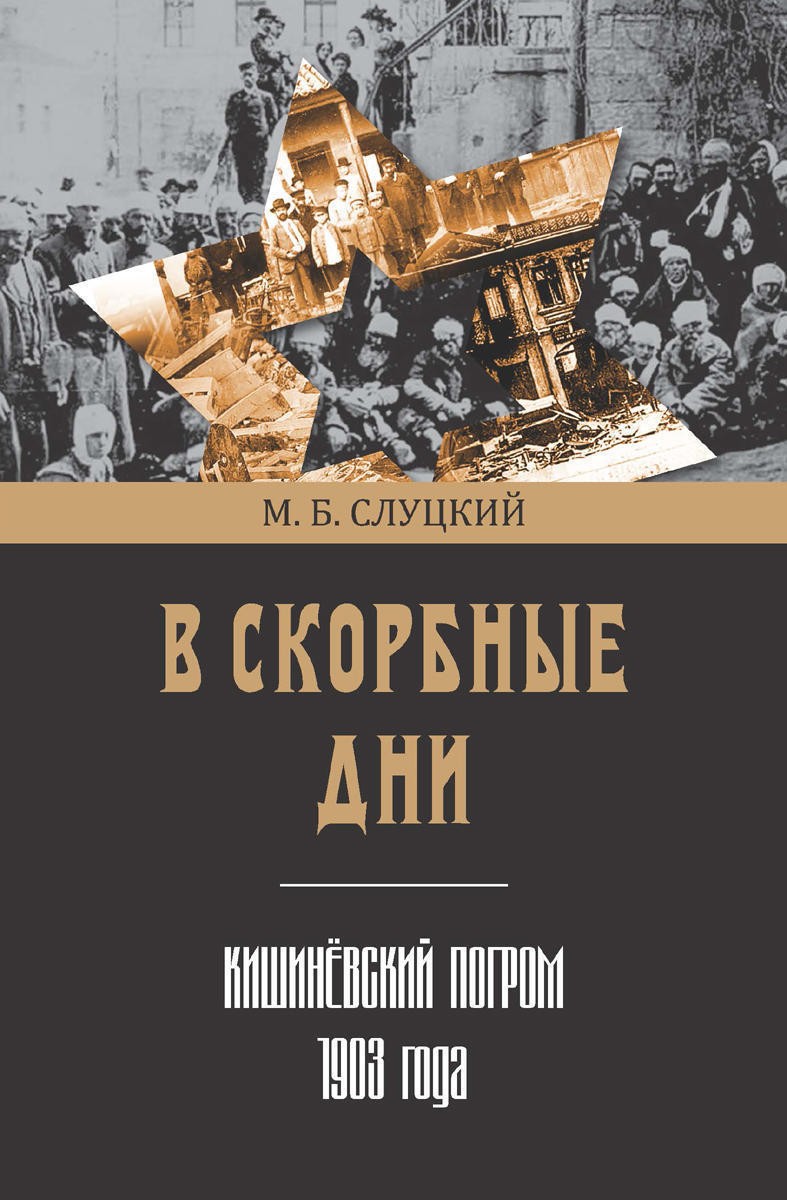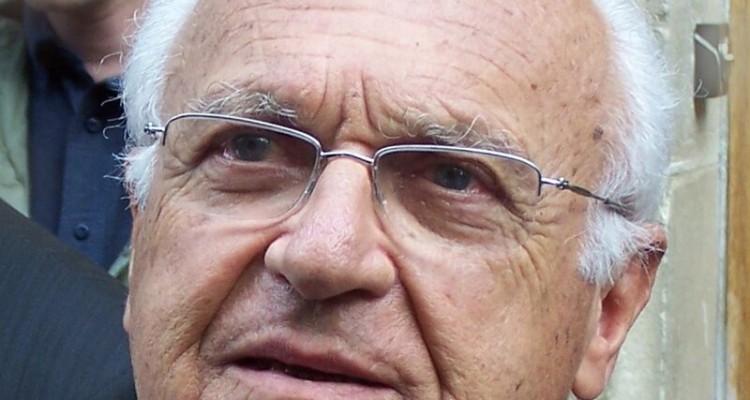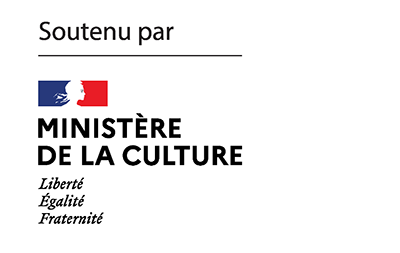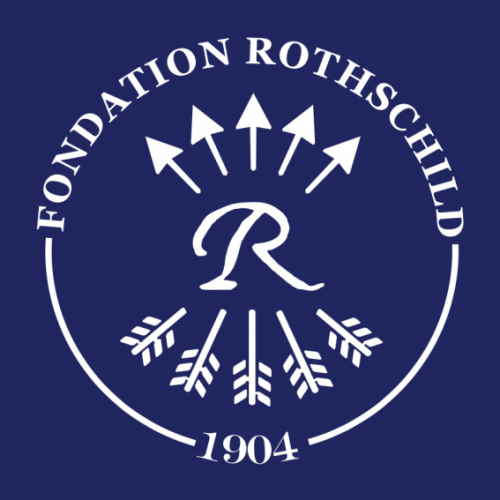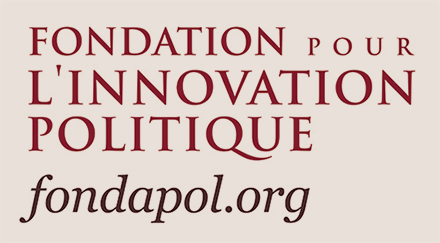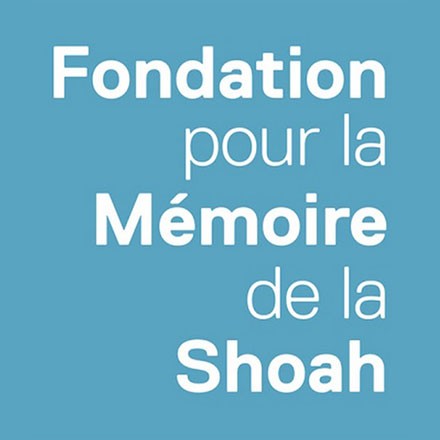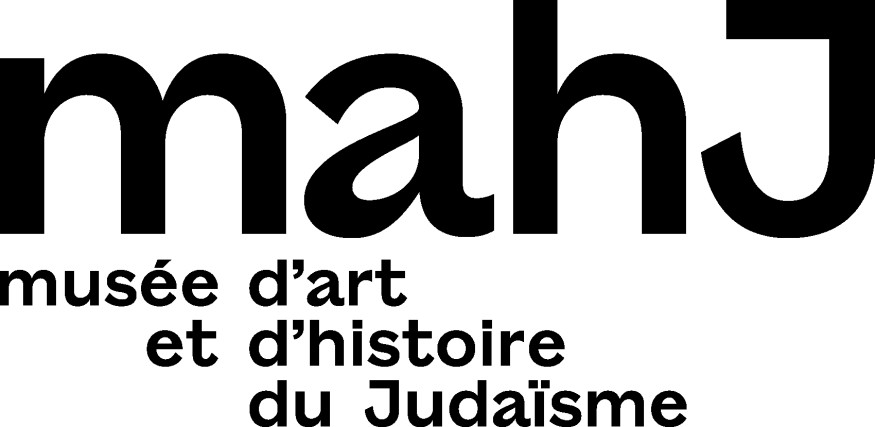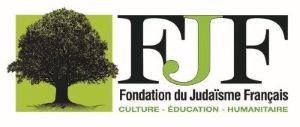On the 6th and 7th of April 1903, the first pogrom of Kishinev took place[1]. Among the dozens and dozens of pogroms that were perpetrated in Eastern Europe between the end of the 19th century and the beginning of the 20th, it has a particular significance. Its repercussions were immediate and worldwide, and even today it still has symbolic value. On the anniversary of the massacre, we are publishing selected excerpts from Days of Affliction – a crucial account by a direct witness who, as a doctor and director of the Kishinev hospital, was also an actor in the event.
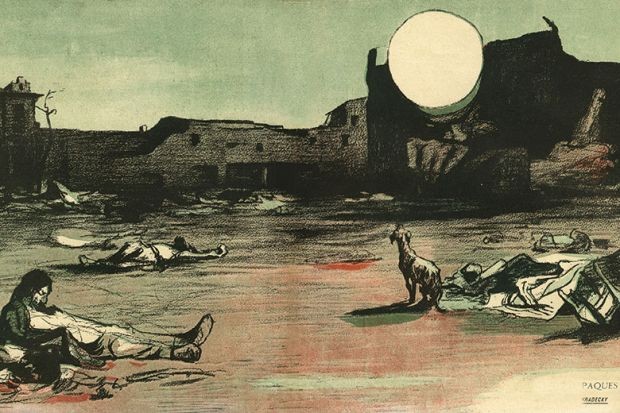
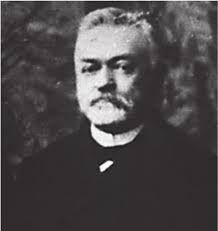
Days of Affliction: The 1903 Kishinev Pogrom by Moisei Borisovich Slutskii (1851 – 1934) / Excerpts
Preface
More than half a century has passed since the first Kishinev pogrom in 1903.
Many victims and witnesses of that terrible event are no longer with us. A new generation has grown up. Some have a vague memory of it, others only know the events from word of mouth. Years will pass… And time – that supreme wonder that can smooth out, heal and make all be forgotten – will erase the slightest trace of the tragedy that took place in Kishinev, of the disaster that struck there, killing, injuring and devastating many innocent people.
This bloody chapter must not be torn from history’s pages. As a direct witness of this terrible event – which shook the civilised world, provoking fierce protests and extreme outrage – I feel the need to immortalise the facts, especially as there is, to my knowledge, no complete description of the Kishinev pogrom. Perhaps my modest work here will serve as a resource for a future historian.
Future generations – which I hope will live in better political and social conditions – will thus be able to learn about one of the saddest episodes of those dark times, lost in eternity.
My deep conviction, forged during the pogrom and unchanged to this day, more than twenty-five years later, is that the Russian people are not guilty of the anti-Semitic pogroms that took place before and after Kishinev. The ignorant masses were merely a blind weapon in the hands of the Tsarist government’s agents, who saw the Jewish people as an enemy of the existing political regime.
Throughout my life, from high school and university to half a century of medical and community work, I was exposed to the different social classes and became convinced that the Russian people, just like our Moldovans in Bessarabia, were honest and free from religious or nationalistic hatred. But the constant persecution and humiliation of the Jewish people led the plebs to consider them as an inferior race, enemies of the nation and hated by the Tsar. The ignorant masses therefore easily believed the words of the malicious agitators, who claimed that the Tsar had not only authorised but ordered the “beating of the Jews at Easter”. I must remind you, as I said in my Memoirs, that the elite of the Russian people – the finest in science, literature and philosophical reflection – have always been outraged by the persecution of the Jews, and particularly by the pogroms, and that most intellectuals have always shown integrity and even goodwill towards the Jews. The only thing that poisoned their existence was a corrupt media and rogue officials who, in order to satisfy the government, set the plebs against the Jews.
I shall try, in my account of the pogrom, to remain as objective as possible, to remove the feeling of revolt and anger, bearing in mind that objectivity is the best way to establish the truth. For this reason I will not include the startling accounts of children being cut in half and raped in public. The 1903 pogrom was cruel enough, there is no need to overdo it. I will only relate what I saw with my own eyes, and then I will try to give a general overview based on what I observed after the events and on the testimonies of victims or witnesses.
In the same way, I intend to portray in this essay the “heroes” who planned the pogrom, those who directly or indirectly participated in it or who showed their inhumanity after the event, and at the same time I want to mention the friends of the Jews, those who showed them kindness and empathy.
May the names of all of them be remembered by the generations to come.
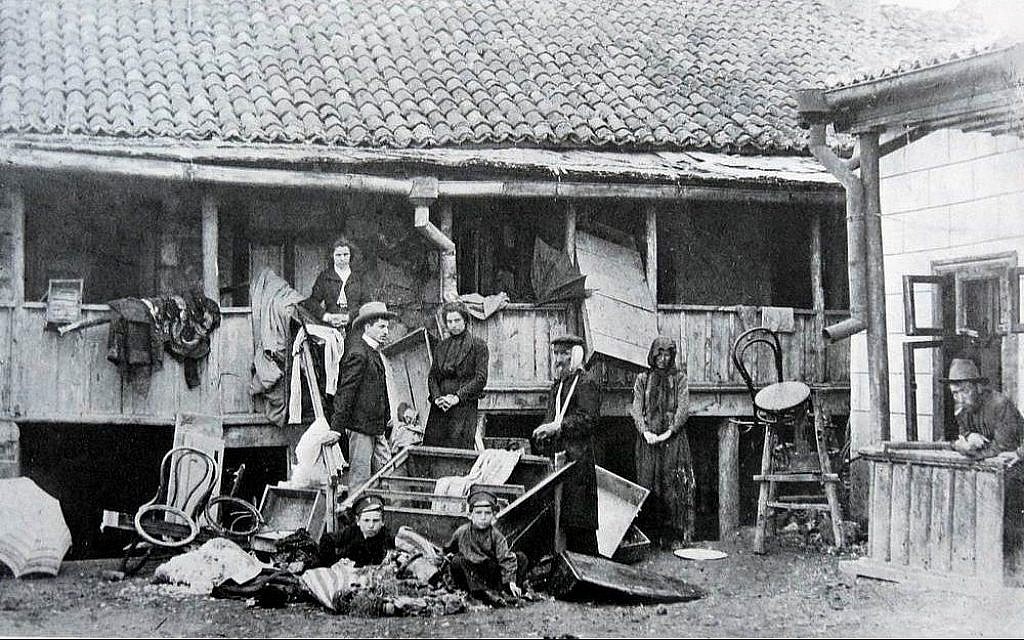
The situation in Kishinev before the pogrom
From the beginning of 1903, rumours began to circulate in the town that unknown individuals, like agitators, some of them locals and others foreigners, were gathering in traktirs, pubs and other places to preach to the people about the Jews’ negative influence and the need to fight them. Soon a more terrifying rumour spread that in the traktirs and at the special meetings an order from the tsar was read out “to beat the Jews at Easter ”. On the day before Easter, rumours spread that a young Christian boy had disappeared in Doubossary, who had undoubtedly been kidnapped by Jews in order to use his blood for their religious rituals.
The Jewish population of Kishinev was anxious and asked for precautionary measures to be taken. Its representatives repeatedly approached Governor von Raaben. He reassured them that there would be no trouble and did not take any action.
Some men, including myself, then went to meet Bishop Jacob. The purpose of our visit was to plead with the Bishop, so that he and the clergy he represented would make the people understand the absurdity of the “blood accusation” and, in general, advocate decency and humanism towards the Jews.
Our visit was rather long, but we left totally disappointed. The bishop showed a complete lack of knowledge of the main Jewish religious precepts. He was obviously unaware that among the foods forbidden to the Jews, blood was the most important, that before food was prepared, blood was removed in various ways, that nowhere in the sacred texts, as hundreds of theologians and the highest Christian hierarchy have stated at different times, is there a hint of such barbaric rituals as the use of Christian blood. We apparently taught him something new by recounting known historical facts, namely that the Roman heretics similarly accused the early Christians of using human blood for religious purposes, for which they were ” sentenced to the beasts ” by the thousands in circuses.
The pontiff’s evasive answers made it clear how little he was willing to speak out in defence of the Jews; on the contrary, it followed from his statements that he himself agreed with the “blood accusation”. This assumption was confirmed a few days later. My friend, the medical inspector Peretiatkovich, told me that the bishop had said to him at the lunch for the consecration of the church built next to the second gymnasium: “Tell your doctor Slutskii that he denies in vain the use of Christian blood by the Jews; of course, not all Jews are guilty of this sin, just the Hasidic sect, but they scrupulously conceal it from the eyes of Jews such as Slutskii and his companions.”
However, I and other representatives of the Jewish community that I had the opportunity to speak with were convinced that our fears were groundless, that it was unthinkable that pogroms would take place in the XXᵉ century, in the presence of an entire army of public order defenders, embodied by the overt and covert police, the leadership of the gendarmerie and the security services, whose duty is to prevent any kind of trouble. The idea that all these “guardians” would organise and participate in the pogrom themselves did not even occur to us. But the large sections of the Jewish population, especially the outskirts living among the Christians, kept worrying and asking for measures to be taken. We went a second time to meet the governor to obtain the same calming assurances. On the other hand, the Christian plebs were convinced that at Easter the authorities would allow them to make a gain on the Jews’ account. Long before the pogrom, ready-made clothes traders in the Old Market had come to tell me that before Easter – the most hectic time for them – when they attracted customers to their shops, the customer would say: “Why would we want to pay for your old clothes when at Easter we can take the best clothes for free?”
Such was the climate in Kishinev in the days before the pogrom.
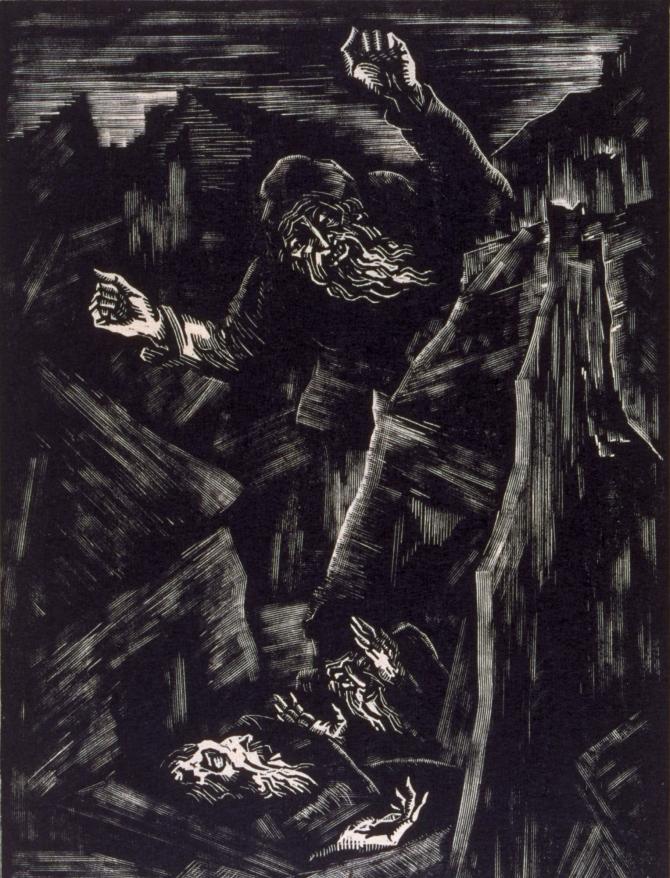
The Pogrom
Sunday, the 6th of April, the first day of the Christian Easter and the last day of the Jewish Passover, arrived. My day had gone on as usual: I went to the hospital, visited some patients and I did not notice anything other than a traditional festive atmosphere. However, late in the evening, sitting in my office with the blinds closed, I heard someone throwing a rock. I immediately went out but there was no trace of the hooligan. Without giving any more thought to this prank, I went to bed with a peaceful mind, telling myself that our fears were certainly groundless. But later I learned that by Sunday afternoon there had been some disturbances, although they were relatively minor: broken windows, passers-by being hit at random, but without any break-ins, serious injuries or deaths. I learned, among other things, that my colleague, Dr Riss, had been attacked: men started to beat him up when a young stranger came to his aid and shouted at them through tears: “How dare you attack him, he is our doctor!” and pulled him out of the perpetrators’ hands.
The next day, the 7th of April, early in the morning, I learned that the residents in my building, almost all traders on the New Market, were very worried because they had been told that their shops there were being vandalised at that very moment. I went out on the balcony and this is what I saw: a crowd of hooligans armed with clubs were ransacking, with shouts and booing, the pub in the neighbouring building. Soon some of them broke away from the crowd and started to break the doors and windows of the two-storey building opposite mine. Some of the residents from my building went to the New Market to see what was going on there, and when they returned they reported to us that there were many injured and some dead, who were being taken to the Jewish hospital. I went out onto the balcony again. The rioters had managed to get into the building. Furniture, sheets, clothes and household utensils were flying out of the windows. The rest of them had stayed in the street and were breaking and trampling the discarded objects furiously, even the Jewish books were being torn apart page by page; some of them, more pragmatic, were grabbing what they could get. I was stunned, wondering what I could do. I was aware that at such a critical moment I had to be at my post in the hospital. But how could I abandon my family: my wife and two small children, frightened, worried and still in shock from the terrible tragedy that had just struck us – the death of our eldest son…

Suddenly I saw my saviours: in front of my building was my remarkable friend, not only my friend but a friend of humanity and of its Jewish side, Dr Nicolai Antonovich Doroshevski, accompanied by a young artillery officer I had met often before; both of them insisted that we leave our apartment and go and stay with Doroshevski. Of course, we gratefully accepted this proposal. We shut the maid in the kitchen, locking the doors and shutters. My wife and the children sat on the seat, Doroshevsky, the officer and I accompanied them, and we set off. The rioters followed us with hostile glares, but the sight of an officer with a revolver in his hand dissuaded them from any aggressive action. The streets we passed through were completely deserted, many houses had icons displayed on their windows; there were no policemen anywhere, even the town sergeants were not at their posts. Once or twice we came across gangs of club-wielding teenagers heading downtown. We arrived safely at Nikolai Antonovich’s house on Kupetchesk Street, not far from Podolsk Street, where several Jewish families had already taken refuge. I was about to go to the hospital when the shouting and commotion from outside drove us out. Then we saw that across the street, a block below, the rioters were tearing down a shop. There were cries of despair coming from it, but no one was coming to help. The same thing was happening on Podolsk Street, where the Feldstein gourmet department stores’ was being vandalised. Soon the rioters were walking along Podolsk Street, their arms full of stolen goods, many of them drinking alcohol directly from the kitchenware they were carrying. Suddenly we were pleased to see a detachment of soldiers, preceded by their officer, coming towards us from Alexandrov Street. We were convinced that they would put an end to the disorder. However, to our great surprise, the soldiers passed by the building on Kupetchesk Street, where the pogrom was in full swing, as if they hadn’t noticed anything, passed us, crossed Podolsk Street, passing rioters bringing back stolen goods from Feldstein’s, and continued on their way uptown. We were shocked to realise that the city was not experiencing a riot by a drunken mob, but a pogrom of the Jews, organised by the authorities.
Despite the concern of my friends and family, and not without risk, I set out for the hospital with the same coachman who had driven us.
As we drove north of the city, I met two detachments of soldiers marching with their officers at the head of the procession. I was puzzled: why deploy troops if they were not taking any action to maintain order? Later I learned that the decision was motivated by the fear that the hooligans, drunk on wine and bloodlust, would also attack the rich Christians. In any case, there was no doubt that the military was marching exclusively in the upper, aristocratic part of the city.
On the way, I passed a group of youths with clubs: they stopped and glared at me in a very hostile way. I told the coachman to speed up. Nobody chased us and I arrived safely at the hospital.
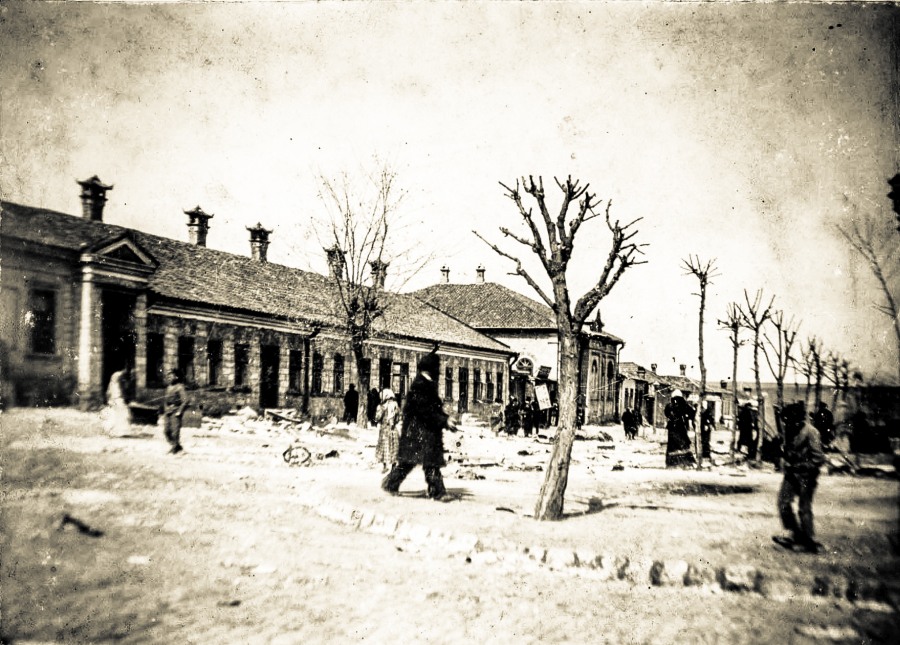
The overall picture of the pogrom
As the third chapter of this account suggests, I witnessed only the beginning of the pogrom. Then the victims passed before my eyes, both the dead and the wounded. I will now try to give the overall picture of the events, based on what I was able to observe after the pogrom and on information gathered from the victims and witnesses.
Three days after the pogrom, I gathered my family from N.A. Doroshevski’s house and we returned home. My building and its residents were not affected, only a few windows and doors facing the street had been broken here and there. When we opened the front door, we found a note on the floor of the hallway, thrown through the broken window, full of spelling mistakes, informing us that the author – a ” benevolent patient ” – had defended our apartments.
Over the next two days I went around the city: the upper districts were more or less intact, only the lower part, inhabited by the working class and the poor, had been affected by the pogrom. Everywhere, the trees were covered with feathers, as if covered in snow. The gaping holes of ripped-out windows and doors disfigured the facades of the buildings. Wreckage of furniture and crockery, shredded sheets and clothes, scattered pages torn from Hebrew books and manuscripts lay on the ground. These bits and pieces showed the ferocity of the pogrom’s executioners. I visited devastated synagogues whose Torah scrolls had been torn up and desecrated; I visited destroyed buildings. The building at No. 33 Schmidt Street was completely destroyed; the flats and common areas were in ruins, all the inhabitants who had not managed to escape were beaten and injured. Two people were killed in the building: Bension Galanter and a 16-year-old boy, Benjamin Baranovitch. This is what the boy’s father told me. When the rioters approached the building, the Baranovich family had hidden in the attic and young Benjamin had taken refuge in the toilet. The vandals dragged him out and started beating him. From the attic, the parents could hear his cries: “Dad! Help, they are going to kill me!” It is not difficult to imagine how the parents must have felt as they hid in the attic, holding their breath. They knew that if they came out of hiding they would not be able to save their son and would die as well.
The neighbouring building, also on Schmidt Street, showed the same tragic scene. All the inhabitants who were still there were beaten and abused. Old Sohail Kelman Voliovich was fatally injured and died a few days later. Those who managed to escape were beaten and killed in the street. But what I just described is nothing compared to what happened in Asia Street. In this dirty and overcrowded street, which rightly bore this name, lived, because of its deprivation, the poorest fringe of the population. For some mysterious reason, the pogrom in this unfortunate place took a particularly atrocious form. At first, the rioters had been satisfied with demolishing a few pitiful slums, destroying their sad bric-a-brac and beating their inhabitants. There were no murders yet. But, spurred on by wine after having destroyed a bar, the rioters set upon a densely populated building at No. 13. Uzi Berlatski, his daughter Haika and the owner of the flat Moishe Makhlin – who did not live there but happened to be there – hid in the attic. When they saw the rioters coming, they took out tiles from the roof with great effort and climbed through the gap to the roof. But the rioters followed them. The scene that unfolded there was appalling. Berlatsky, his daughter and Makhlin were running on the roof while ferocious beasts in human form chased them. Soon the vandals caught them and, to the roaring laughter of the crowd below, began throwing them off the roof one by one. Haika survived, but Moishe and Uzi died.
Haim Nicenson and his wife had hidden in the cellar, and perhaps they would have survived had they not heard the desperate cries of those being beaten and killed outside and run across the street to the courtyard of the opposite building. Haim managed to reach it, but when he noticed that his wife had stayed behind, he turned around to join her. The rioters saw them and pounced on them. While trying to escape from his persecutors, Haim fell into a puddle. The mob caught up with him and began to beat him as he struggled in the mud. Thinking they had killed him, they released him and rushed back to the flats. Soon after, Nicenson woke up and started to show signs of life: he was moaning and waving his hands as if asking for help. The Jews in the building across the street noticed this, and risked their lives to rush to him, hoping to pull him out of the mud puddle and into their home. The murderers saw the scene. The Jewish rescuers fled and Nicenson was beaten again, this time to death. The fourth was Mordko Grinshpun. He and his family had hidden in the barn. The mob entered the barn and a Moldovan neighbour, well-known to all the inhabitants of the building, including Grinshpun, stabbed Mordko, who was then clubbed to death by the mob in front of his wife and children.
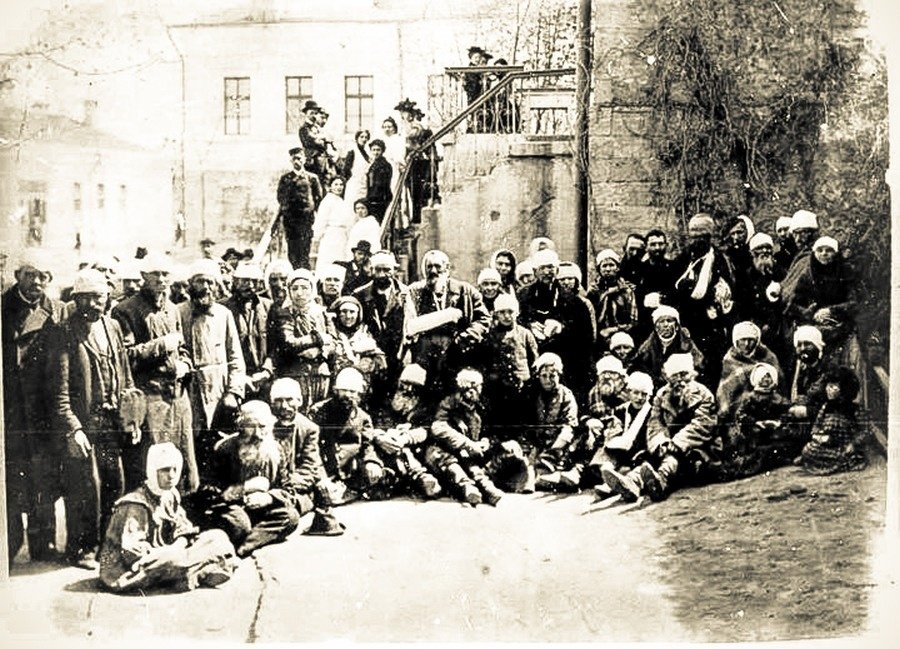
Curiously, near building No. 13, a town sergeant was at his post and not far away stood a detachment of soldiers. Despite the many desperate cries for help, they remained passive spectators of the horror unfolding before their eyes, justifying themselves on the grounds that they had not received any ‘orders’.
I entered the house at No. 7 Podolsk Street. The building and its furniture were in ruins. In the street, next to the debris of furniture, window frames, pieces of crockery and other rubble, there was a dislocated metal box. The owner of the house and the box, Rudi, told me that the rioters had attacked the box for over an hour with crowbars and hammers, in full view of Christian neighbours, passers-by and even the police, but no one had stopped them.
Two suburbs of the city were particularly affected: the area around the slaughterhouse and the so-called Sculeny bypass. The area around the slaughterhouse was mainly inhabited by Christians. Before the pogrom, they had maintained good neighbourly relations with the Jews, or even, one might say, friendship.
Until the afternoon of the 7th of April, the neighbourhood had remained calm, despite the news of the horrors taking place in the city, brought constantly by those who were fleeing it, and which of course worried the Jews. In the afternoon, a town sergeant arrived at his post near the slaughterhouse and spoke to the Moldovans. Had he merely “informed” them of what was happening in town, or suggested that they should not stay behind, or did they come to this conclusion on their own, nobody knows. The fact is that after the sergeant came, a small group of hooligans gathered there and the pogrom began. At first, most of the Christians did not participate in the pogrom, many of them even hid Jews in their houses who had abandoned theirs to the rioters. But the mob started to push open the doors of these houses and, under threat, forced the Christians to chase the fugitives outside, where they were beaten up. In one of these Christian houses, some women had hidden several children. The master of the house arrived, scolded them and threw the weeping children out. The bad example had its imitators, the number of rioters increased, and several dozen wounded were taken from this distant – and until then peaceful – suburb to the hospital. Among the victims, a certain Meer Vaisman suffered particularly badly. Before the pogrom, he was blind in one eye, the rioters gouged out the second.
In the other suburb, the Sculeny bypass, the whole day of the 7th of April had been “uneventful”: the bastards who lived there went to “work” in the city, expecting to make more profit than in the surrounding area, and only beat up Jews on the way. Upon learning about the tragedies in the city, some of the Jewish population fled to their Christian neighbours, others took shelter in the Jewish cemetery on the outskirts of the town, but the majority remained at home. Late in the evening, the hooligans returned to the village and from the hospital, throughout the night of the 7th and the 8th of April, we could clearly hear screams and cries coming from the “ramp” – the cruel and complete pogrom was in full swing. On the morning of the 8th of April, many dead and wounded were still being taken to the hospital, while in the city the pogrom had ended. A tragedy similar to the one in the building at No. 13 Asia Street took place in the house of Dovid Koval. Koval, the owner of the house, lived there with his wife and daughter, and some other Jewish tenants. His daughter’s fiancé, who had just returned from military service, was also there as a guest. The residents locked the doors and windows and, as a precaution, armed themselves with whatever they could find. However, when they saw the mob breaking down the doors, they broke down the wall between their house and their neighbour’s, Shtirbu, hoping to find refuge there. But Shtirbu pointed his loaded rifle at them, declaring that whoever crossed the threshold of his house would be shot. In the meantime, the rioters burst into the house and the unfortunate people found themselves in the crossfire. Their attempts to defend themselves only enraged the murderers and Dovid, his wife, daughter and fiancé, as well as three other Jews perished – seven people were killed.
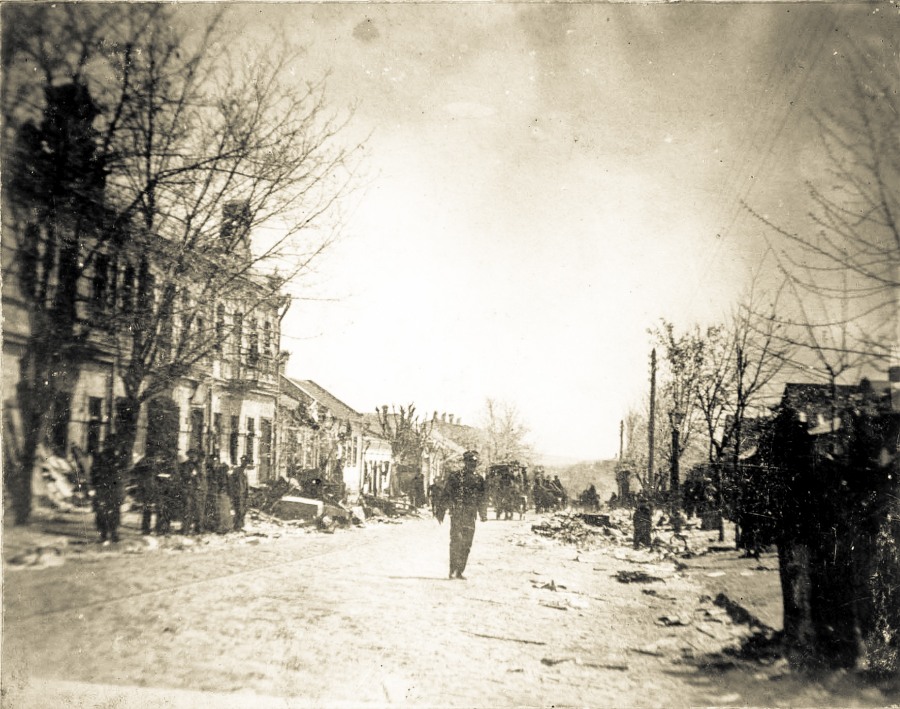
Those who did not know the exact circumstances of the pogrom must have wondered why the Jews, who were in the majority in some parts of the city, did not resist the rioters and why they did not organise their defence. Foreigners and residents of other towns who came to Kishinev to gather information after the pogrom blamed the Jews for their inaction and even accused them of cowardice.
In reality, there were many attempts at self-defence by the Jewish population, but they were all immediately suppressed by the police and the army. We can give more than one example here. Thus, according to several testimonies – including one by a certain Krips, an army volunteer living near the Place des Vins – a considerable number of Jewish butchers, armed with their work tools, axes and large knives, assembled in this square with the intention not only of preventing the looting of their houses but also of chasing the rioters out of the surrounding districts. They would undoubtedly have defeated these cowardly scavengers, if the police had not intervened to disperse them on the grounds that the gatherings were illegal. When the butchers refused to comply, a detachment of soldiers arrived to assist the police. Using first truncheons, then bayonets, the soldiers cleared the square of Jews.
Armed with whatever they had at their disposal, owners and managers had stationed themselves in front of their shops on Pushkin Street, between Nikolaev and Kharlampiev Streets, and on part of Ekaterinin Street (where all the shops were Jewish), thus deterring hooligans from approaching them. The police, assisted by a detachment of riot police, dispersed the defenders and arrested the most persistent. After their departure, the rioters looted all the shops, taking away, on foot or even by car, the stolen goods. The Landesman department stores’ on the corner of Nikolaev and Pushkin Streets was looted down to the last pair of trousers. Many of the hooligans changed their clothes directly on the spot, putting on new ones under the jeers of the crowd. So the rumours before the riot that there was no point in buying old clothes when, during the pogrom, it would be possible to pick up new ones for free had been proved right.
Some coachmen I knew, who I had often travelled with, told me that many of the coachmen, carters and porters living in the neighbourhood, strong and courageous men, had gathered in the Old Market Square. Armed with axes and clubs, they had, according to the coachmen, decided that “if some of them were to fall, the rioters would fall too”. A large police patrol intervened, arresting many of them and dispersing the rest. But in places that the police could not or did not have time to “clear” to give way to the rioters, there was no pogrom.
Thus, a large crowd of armed Jews had gathered in front of the shops down Ekaterinin Street, marching up the street towards the rioters and the shops they had looted. On seeing this procession advancing towards them, the rioters fled down the side streets. The late engineer Kush, a generous and devoted man, had assembled under his command an “autonomous patrol of rescue workers” composed of Christians and Jews, divided it into quarters between Kiev and Podolsk streets, and any attempt by the rioters to approach the quarters defended by Kush’s guard was immediately suppressed. The same thing was happening in the other part of the city, Kharlampiev Street, the defence being organised by the leader of a musical band, Chernetskii. Even in places where individuals had shown resistance and the police had not intervened, there was no pogrom. The entrepreneur Krips lived in a house in the “Iron Column”. One part of the house was occupied by his shop on Schmidt Street, the other part was his apartment on the Place des Vins. On the 7th of April, the rioters had tried several times to approach his house from both sides. But it was enough for him to fire a few shots for the rioters to cowardly flee.
These examples clearly show how easily the police could have subdued the pogrom if only they had wanted to.
The incomplete picture we have just painted is a sufficient representation of the terrible whirlwind that hit the peaceful Jewish population of Kishinev on those first days of Easter in 1903.
Moisei Borisovich Slutskii (1851 – 1934)
